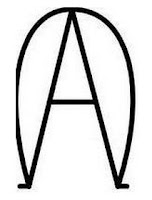TTAB Quarterly Index: July-September 2016
E-mail subscriptions to the TTABlog are available. Just enter your e-mail address in the box on the right to receive a daily update via Feedblitz. You may also follow the blog on Twitter (here). And don't forget to leave your comments! [Note that E-mail subscribers may have to surf to the blog to see comments]. Finally, please report any broken or inoperative links, as well as any errors and omissions, to the TTABlogger at jwelch at wolfgreenfield dot com.
Section 2(a) - Deceptiveness:
Section 2(a) - False Association:
Section 2(d) - Likelihood of Confusion:
- TTAB Test: Is "HOPNOTIC" for Beer Confusable With "HPNOTIQ" for Liqueur? [Yes]
- TTAB Test: How Did These Four Section 2(d) Appeals Turn Out?
- TTAB Test: Are These Design Marks Confusable for Jewelry?
- Precedential No. 24: TTAB Affirms 2(d) Refusal of MT RAINIER Logo, But Reverses on 2(e)(3)
- Split Board Panel Reverses 2(d) Refusal of "THE RAIL & Design" for Restaurant Services
- TTAB Test: Is FLOSSBONE Confusable With FLOSSIES for Dog Treats? [Yes]
- TTAB Test: Is "DUFFY" Confusable With "PETER DUFFY" For Clothing? [Yes]
- TTAB Test: Are These Two "K4K & Design" Marks Confusable for Clothing? [No]
- Double WYHA? RENTED.COM Merely Descriptive and Confusable with RENT.COM for Real Estate Services
- TTAB Test: Which of These Three Section 2(d) Refusals Was Reversed?
- Finding Institutional Chicken Related to Frozen Fish, TTAB Affirms RED LABEL 2(d) Refusal
- TTAB Test: Are These Ice Cube Marks Confusable for Soft Drinks? [Yes]
- TTAB Test: Which Of These Three Section 2(d) Refusals Was Reversed?
- Not Precedential: MISS G-STRING INTERNATIONAL Not Confusable With MISS NUDE INTERNATIONAL, Says TTAB
- TTAB Reverses 2(d) Refusal of Salvation Army Mark, Finding Unity of Control
- BOXME Not Confusable With BOX for Data Storage Services, Says TTAB
- TTAB Test: Which One Of These Three Section 2(d) Refusals Was Reversed?
- Precedential No. 20: TTAB Dismisses 2(d) Opposition, Opposer Fails to Prove Rights in SEXSTROLOGY
- TTAB Test: Is DUO for Beer Confusable with DUO for Wine [Yes]?
Section 2(e)(1) - Mere Descriptiveness:
- TTAB Test: Is PROBOKNOW Merely Descriptive of a Legal Services Website? [Yes]
- TTAB Test: Is "CAT & CO." Merely Descriptive of Cat Litter? [No]
- TTAB Test: Is "PRO." (Stylized) Merely Descriptive of Architectural Services? [Yes]
- Double WYHA? RENTED.COM Merely Descriptive and Confusable with RENT.COM for Real Estate Services
- TTAB Test: Three Mere Descriptiveness Refusals For Your Perusal
- TTAB Test: Is "AMERICAN BARRISTER" Descriptive of Legal Services? [No]
- TTAB Test: Is "GUINEA" Merely Descriptive of Collectible Coins? [Yes]
- TTAB Test: Is "TOON KICKER" Merely Descriptive of Pontoon Motor Mounts? [Yes]
- TTAB Test: Should the Stylization of This Descriptive Term Support a Principal Registration?
- TTAB Test: Is "HOME BREWING CO." Merely Descriptive of Beer? [Yes]
- TTAB Test: Is FIRST TUESDAY Merely Descriptive of Lottery Services? [Yes]
- WYHA? BEST PROTEIN Merely Descriptive of Nutritional Supplements, Says TTAB
- TTAB Snuffs Out Two (Non-)Marijuana TM Applications
- TTAB Finds Stylized "É" Deceptive or Deceptively Misdescriptive for Supplements
Section 2(e)(3) - Geographically Deceptively Misdescriptive:
- EURO for Paint Spray Guns Made in Taiwan is Deceptive, Says TTAB
- Precedential No. 24: TTAB Affirms 2(d) Refusal of MT RAINIER Logo, But Reverses on 2(e)(3)
Section 2(e)(4) - Primarily Merely a Surname:
Section 2(e)(5) - Functionality:
Section 2(f) - Acquired Distinctiveness:
- Finding Acquired Distinctiveness, TTAB Reverses 2(e)(1) Refusal of WATERCRAFT SUPERSTORE
- TTAB Dismisses Surname Oppositions to SCHLAFLY for Beer, Finding Acquired Distinctiveness
- Precedential No. 18: TTAB Reverses Refusal of the Color White for Gunpowder Charges
Application Requirements/Lawful Use/Specimen of Use:
- Precedential No. 23: TTAB Affirms Refusal Of "pitchingsmart" Due To Faulty I.D. And Specimen
- Precedential No. 21: Marijuana Sale Illegal, TTAB Affirms HERBAL ACCESS Refusal for Retail Services
Dilution:
- Further Comments of Professor McCarthy Regarding TTAB Dilution Analysis
- Professor McCarthy Criticizes the TTAB's Dilution Analysis
Failure to Function:
Fraud:
Genericness:
- TTAB Finds "THE CORPORATE LAW GROUP" Generic for ... Guess What?
- TTAB Test: Is SKINNIBELT Generic for Belts?
- TTAB Finds 1.0, 1.25, and 1.5 Generic For Cigarette Rolling Papers
Discovery/Evidence/Procedure:
- Precedential No. 28: Claim Preclusion Inapplicable To Fraud Claim Due To Different Transactional Facts
- Precedential No. 25: Issue Preclusion Applies to Standing, Says TTAB
- Precedential No. 22: Appellants Fail To Address PTO Refusals, TTAB Affirms
- TTAB Dismisses Opposition, Rejecting Opposer's Improper Declaration Evidence
- TTAB Test: Can the TTAB Order the Parties to Mediate?
- TTAB Enters Judgment as Sanction For Non-Compliance With Its Orders
- Supplemental Registrations and Acquired Distinctiveness: Did The TTAB Get This Right?
- Precedential No. 20: TTAB Dismisses 2(d) Opposition, Opposer Fails to Prove Rights in SEXSTROLOGY
Other:
- Christopher Larkin Appointed As TTAB Administrative Trademark Judge
- Erik Pelton's Report on Sept. 16th TPAC Meeting
- TTABlog Tweets and Re-Tweets
- TTAB Posts September 2016 Hearing Schedule
- TTAB Posts August 2016 Hearing Schedule
- NYIPLA Seminar: "Hot Topics In Intellectual Property Law" - July 20th in NYC









































